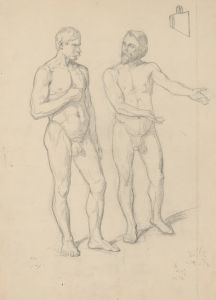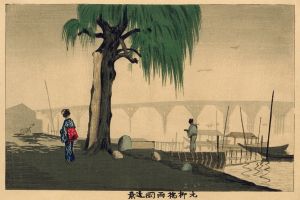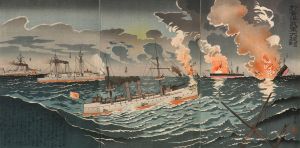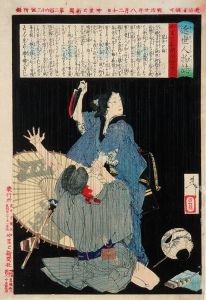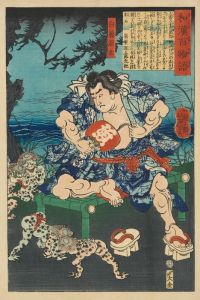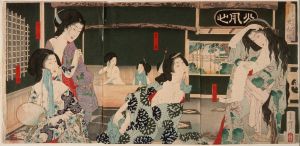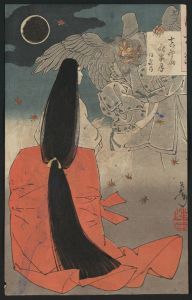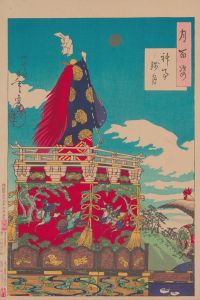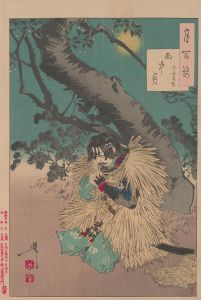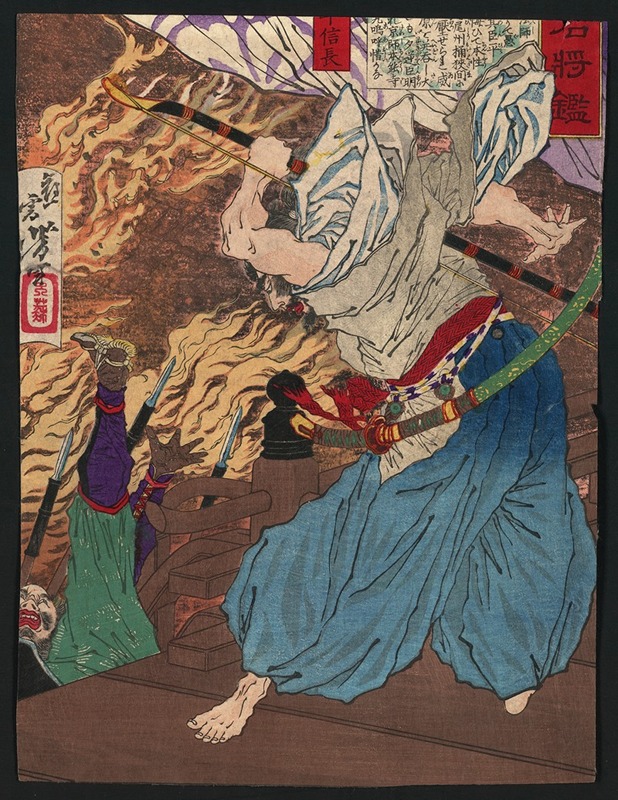
Oda Nobunaga
A hand-painted replica of Tsukioka Yoshitoshi’s masterpiece Oda Nobunaga, meticulously crafted by professional artists to capture the true essence of the original. Each piece is created with museum-quality canvas and rare mineral pigments, carefully painted by experienced artists with delicate brushstrokes and rich, layered colors to perfectly recreate the texture of the original artwork. Unlike machine-printed reproductions, this hand-painted version brings the painting to life, infused with the artist’s emotions and skill in every stroke. Whether for personal collection or home decoration, it instantly elevates the artistic atmosphere of any space.
Tsukioka Yoshitoshi (1839–1892) was a renowned Japanese artist known for his woodblock prints in the ukiyo-e style. He is often celebrated for his innovative approach and his role in revitalizing the ukiyo-e tradition during a time when it was in decline. One of his notable works is a depiction of Oda Nobunaga, a prominent daimyo during the Sengoku period of Japanese history.
Oda Nobunaga (1534–1582) was a significant figure in Japanese history, known for his role in the unification of Japan. He was a powerful and ambitious leader who laid the groundwork for the eventual unification of the country under the Tokugawa shogunate. Nobunaga is often remembered for his military prowess, strategic acumen, and his efforts to modernize Japan by introducing Western technology and culture.
Yoshitoshi's depiction of Oda Nobunaga is part of his broader body of work that often focused on historical and legendary figures. Yoshitoshi had a keen interest in capturing the essence of his subjects, often portraying them with a sense of drama and intensity that was characteristic of his style. His prints were known for their vivid colors, dynamic compositions, and intricate details, which helped convey the personality and significance of the figures he depicted.
In his portrayal of Oda Nobunaga, Yoshitoshi likely aimed to capture the daimyo's formidable presence and his impact on Japanese history. While specific details about this particular print may not be extensively documented, it can be inferred that Yoshitoshi's work would have emphasized Nobunaga's role as a transformative figure in Japan's tumultuous Sengoku period. The print would have been part of Yoshitoshi's effort to document and celebrate the historical narratives that shaped Japan's cultural heritage.
Yoshitoshi's work, including his depiction of Oda Nobunaga, is significant not only for its artistic merit but also for its contribution to the preservation and interpretation of Japanese history. His prints serve as a visual record of the past, offering insights into the people and events that have shaped Japan. Through his art, Yoshitoshi provided a bridge between the traditional ukiyo-e style and the evolving artistic landscape of the Meiji period, ensuring that the stories of historical figures like Oda Nobunaga continued to be told and appreciated by future generations.
Overall, Tsukioka Yoshitoshi's depiction of Oda Nobunaga is a testament to his skill as an artist and his dedication to capturing the essence of Japan's historical and cultural legacy. His work remains an important part of the study of Japanese art and history, reflecting the enduring influence of figures like Nobunaga on the nation's identity.





